2013 President's Fall Address
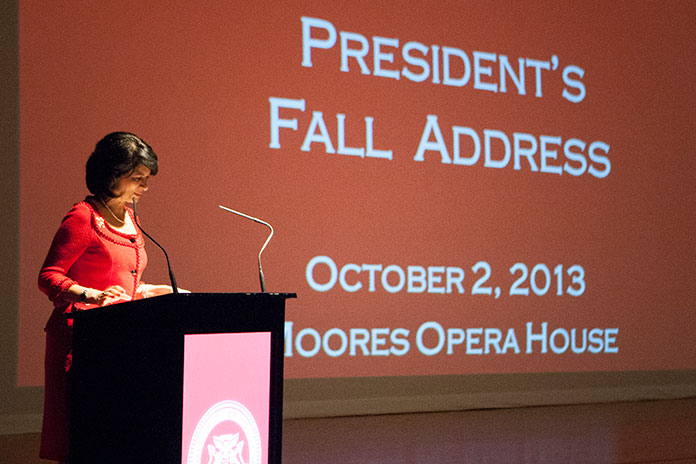
Renu Khator
University of Houston
Fall Address
October 2, 2013
Good morning everyone! Thank you, Professor Wallace, for your kind introduction. And thank you for your dedicated service to the Faculty Senate and the University.
Thank you…all of you…for being here this morning in this beautiful and inspiring Moores Opera House.
Let’s give another round of applause to our talented performers from our School of Theater and Dance. And you are in for another treat at the conclusion of my address, when our award-winning Moores School of Music Concert Chorale will perform for us.
I stand before you today for the fifth time, and five times as humbled and grateful for this opportunity. We are here to celebrate our collective accomplishments and to reflect on our shared dreams for our collective future.
We have gone places we never knew we could reach and, through this process, you have taught me there is no limit to our dreams, and no boundary to our success.
I am honored to acknowledge the presence of the members of our Board of Regents, whose guidance makes everything possible for us.
- Board Chairman Jarvis Hollingsworth
- Board Vice Chairperson Nandita Berry
- Board Secretary Welcome W. Wilson, Jr.
- Regent Mica Mosbacher
- Regent Spencer Armour
- Regent Roger Welder
- Student Regent Benjamin Wells
Gracing this occasion are several of our former regents, on whose shoulders we stand tall today. Our Former regents, would you please stand?
Welcome also to members of the Texas Higher Education Coordinating Board and proud Cougars—Dr. Dennis Golden and Dr. Durga Agrawal.
We also salute the members of my three Advisory Boards:
- Energy Advisory Board
- Board of Visitors
- Campaign Planning Committee
Will the members please rise?
In attendance are presidents of our system universities. Together we make one of the best systems of higher education in the nation. Will the presidents please rise?
A hallmark of higher education is shared governance, and I acknowledge the leadership present today. May I request the leadership from the Faculty Senate, Staff Council, Student Government Association, and the Alumni Association to please rise?
In the last five years, we have witnessed many changes. We have…
- …launched initiatives,
- …constructed buildings,
- …shaped our recruiting of students, and hiring of faculty, and
- …organized and reorganized ourselves for efficiency.
The question that I would like to raise, and the basis for my address today, is a simple one: “So what?”
So what if buildings have been built?
So what if initiatives have been launched?
So what if recruiting and hiring practices have changed?
And so what if efficiencies have been achieved?
Has any of this made a difference in the lives of those we seek to educate and support—our students and alumni—or those who are our biggest assets—our faculty and staff—or those we call our community—our city, our state, and beyond.
Let’s begin by looking at our massive $1 billion building program that included 21 buildings, and 4 million sq. ft. of new or renovated space on across the system but mostly on this campus. As always, our top priority is our students, so let’s evaluate the impact of our efforts on student success.
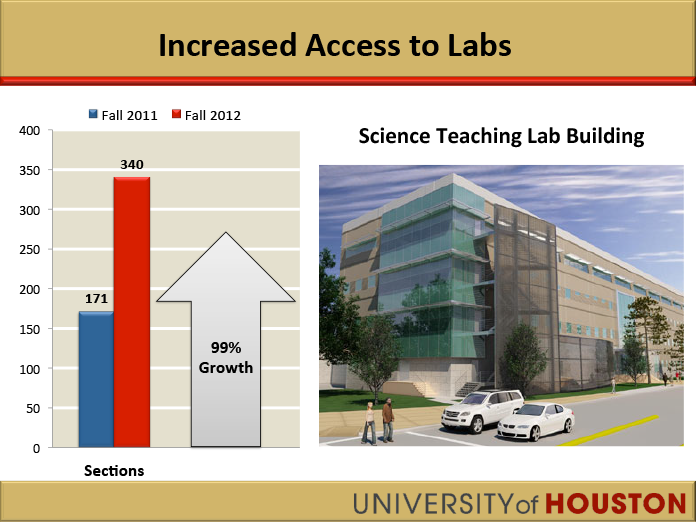
Thanks to the renovation of science labs, total lab space on campus has grown to almost 1 million square feet. As space has expanded, so have learning opportunities. For example, we have doubled the number of undergraduate chemistry and biology lab sections offered to students in just one year!
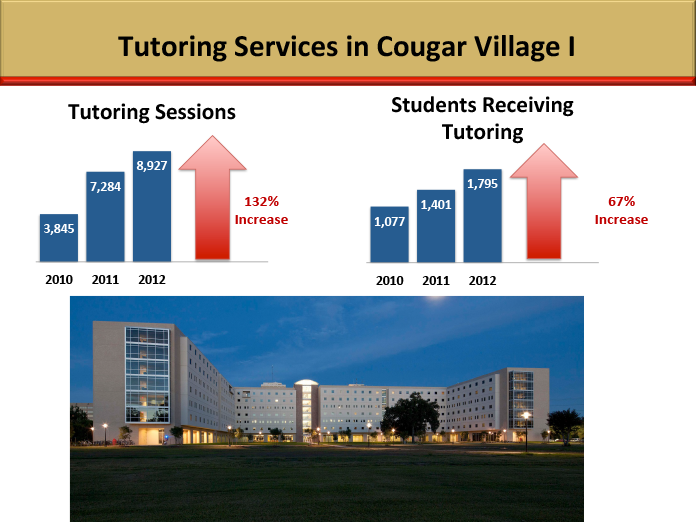
Thanks to new spaces in the Cougar Village, we are offering twice as many tutoring sessions, reaching out to two-thirds more students than before.
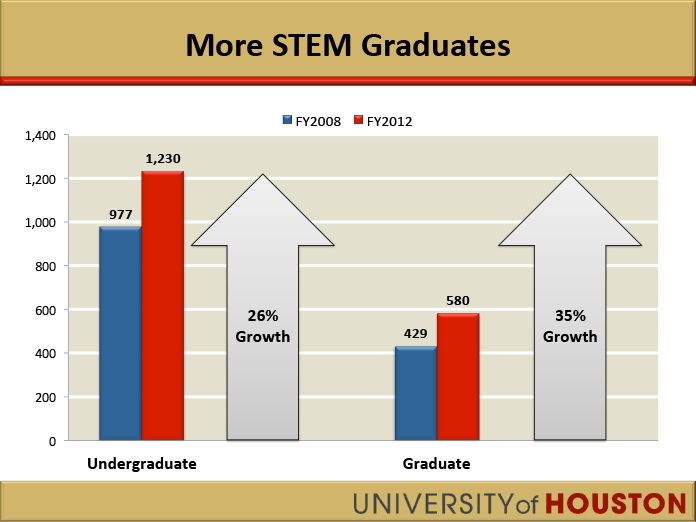
Because of these efforts, we have increased the number of students in STEM fields—science, technology, engineering and math—a state and national priority. The growth has been 26% at the undergraduate level and 35% at the graduate level.
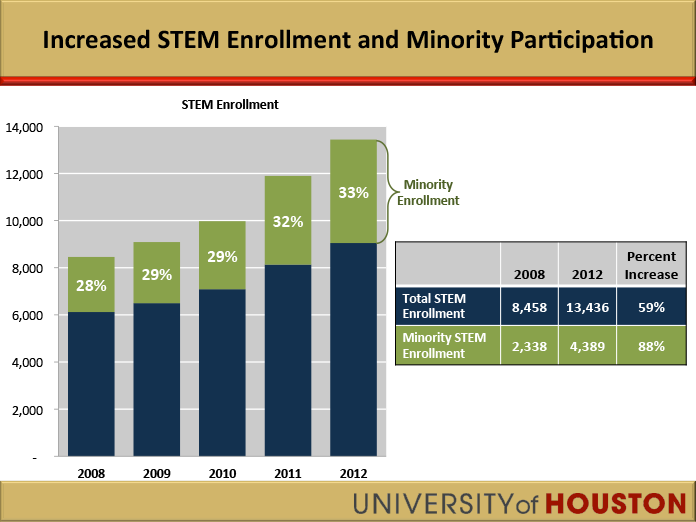
True to our mission, we have been able to increase the participation of minorities in STEM fields by a remarkable 88%.
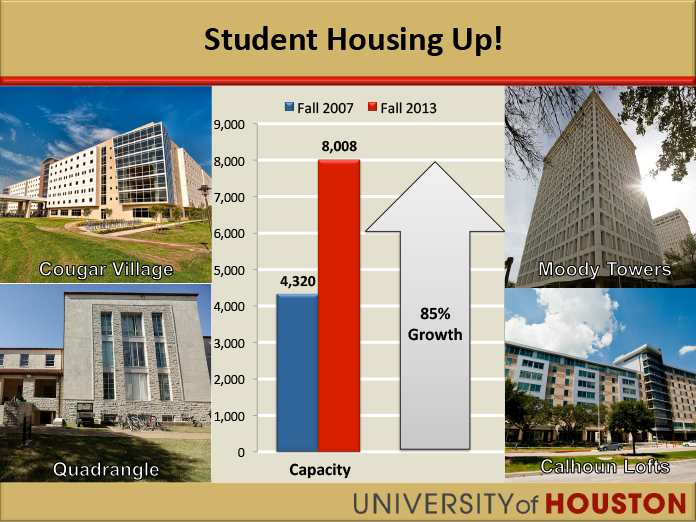
The housing capacity on campus has grown to 8,008 beds. But it is not just the number of beds that make our residential district special. What makes it special are the 6 faculty living among our students, and the 15 classrooms located in it that make it easier for students to learn right where they live!
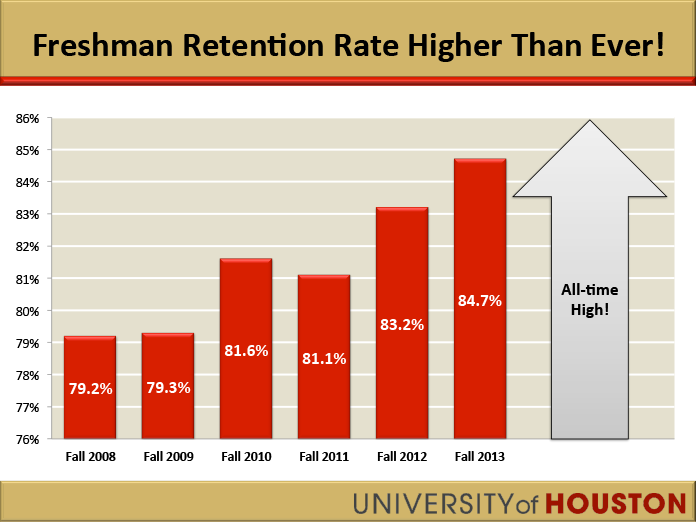
The university-wide retention rate for freshmen has reached an all-time high of 84.7%. And it is higher for the residents of Cougar Village than their general cohort.
Every one of us has played a role in this transformation in our own way, but leading the charge are the members of the Department of Student Housing and Residential Life. May I ask those who are here to please stand and be recognized?
With our new residence halls, new student life programs, new degree programs, and an aggressive emphasis on timely graduation, we have shaped the expectations and learning experience at the University of Houston.
Consequently, the new class of freshmen Cougars—the Class of 2017—is stronger than ever!
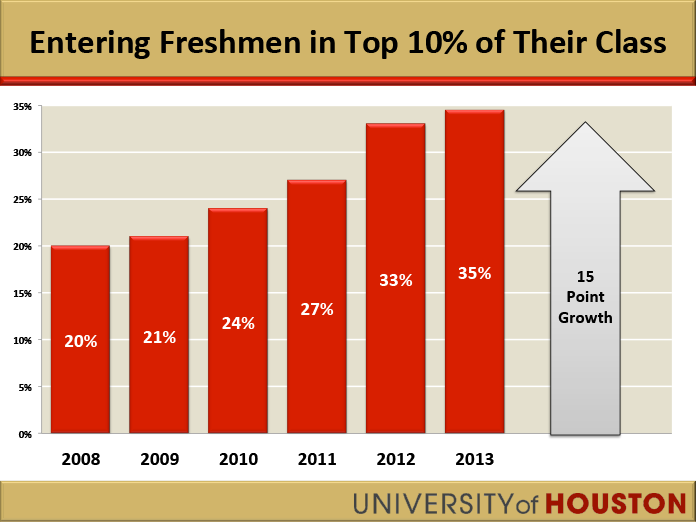
35% of them are in the top 10 percent of their high school class!
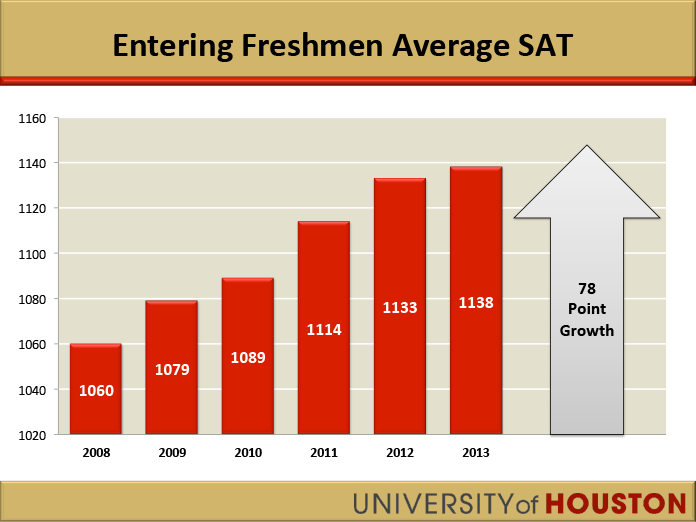
And 1138 is their average SAT score, much higher than 1060 in 2008.
The Honors College is certainly pushing the pursuit of excellence to new heights.
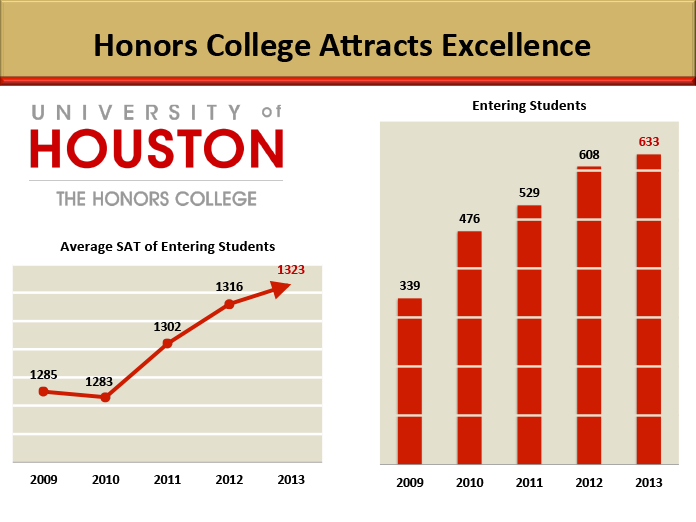
The new Honors College entering class is larger and stronger than ever—633 with an average SAT of 1323!
To those who question whether our commitment to minorities and our Tier One status are in conflict, I would like to offer an important data point. Despite having an excellent historically black-serving institution, Texas Southern, right across the street, we serve more African American students than Texas A&M, Texas Tech, and UTEP combined!
Moving on to the health initiative, our Board of Regents, last year, voted to establish a Health Science Center to leverage our unique location in the nation’s fourth largest city, home of the world’s largest medical center.
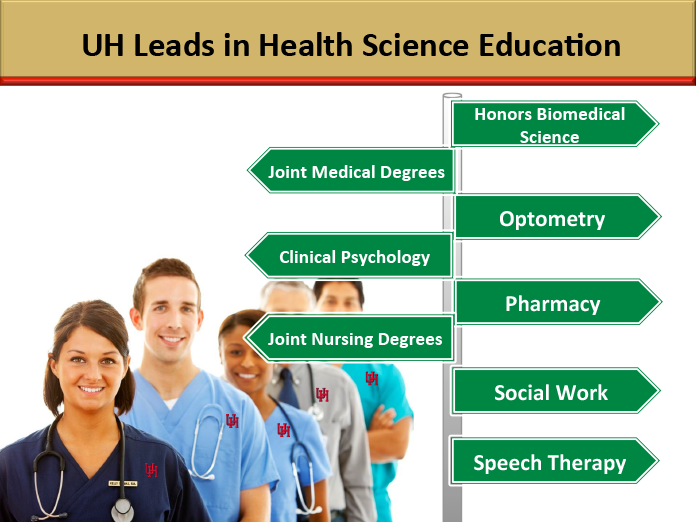
As you may know, the University of Houston already had a huge footprint in the health area.
- More than 11,000 students are enrolled in degrees that serve and shape the healthcare industry.
- 24% of all degrees granted by UH have a pathway–direct or indirect–to health-related jobs.
- And 40% of our sponsored research—from basic and allied sciences, to the social sciences and the humanities–is in the area of health.
But last year, we launched new undergraduate programs with the idea of giving our undergraduate students direct pathways to the best medical and allied health programs in the region.
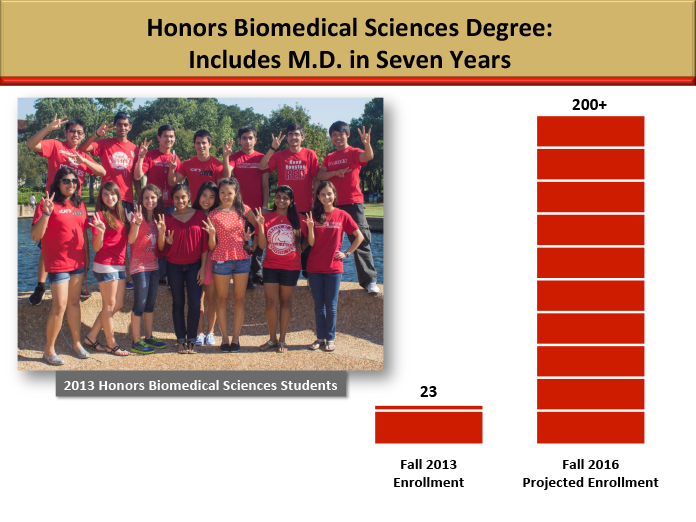
The Honors College has 23 students in its Biomedical Honors program and it is projected to grow to 200 by 2016. This program will train students to go to medical, nursing, pharmacy, optometry and other allied programs at UT Health Sciences, UTMB, Baylor and the University of Houston.
Let’s move on to the area of research and discovery. Our efforts are focused on hiring the nation’s top talent, increasing the number of doctoral students, aggressively commercializing technologies from our faculty, and getting more national visibility.
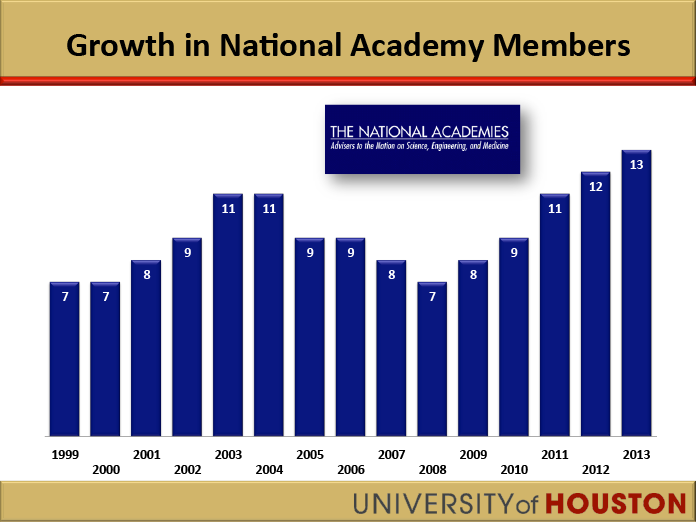
With the addition of 2 members of the National Academies this year, we now have the largest roster of the National Academies in the history of the university.
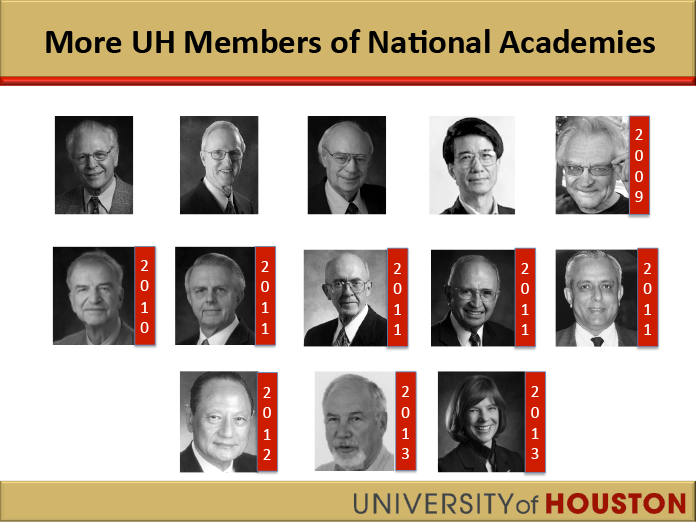
Drs. Charles Cutler and Bonnie Dunbar, the newest additions to this group of distinguished faculty members, would you please stand?
Graduate students and postdoctoral fellows are the backbone of any university’s research enterprise.
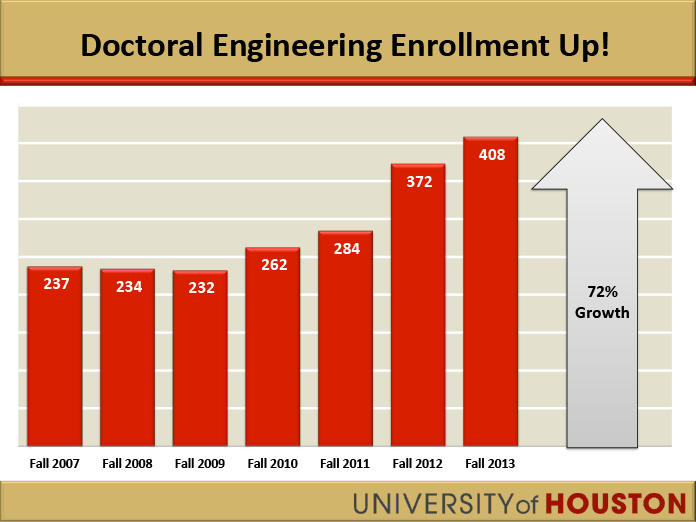
We have increased the number doctoral students, particularly in engineering, over the years. And this year, we have made a special commitment to graduate students teaching in the general education core curriculum.
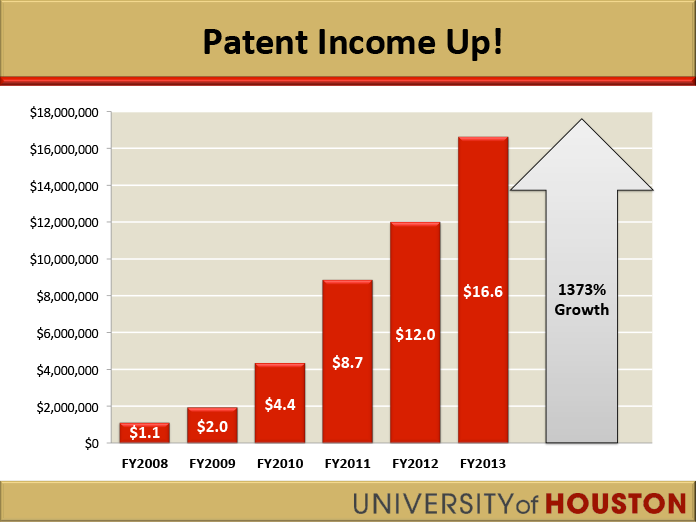
The trajectory on technology transfer is our most impressive story of the year. Royalties from university-owned licenses have grown to the level where UH now ranks No. 14 among all public universities in the nation, and No. 1…let me repeat…No. 1 in the nation among all public universities without a medical school!
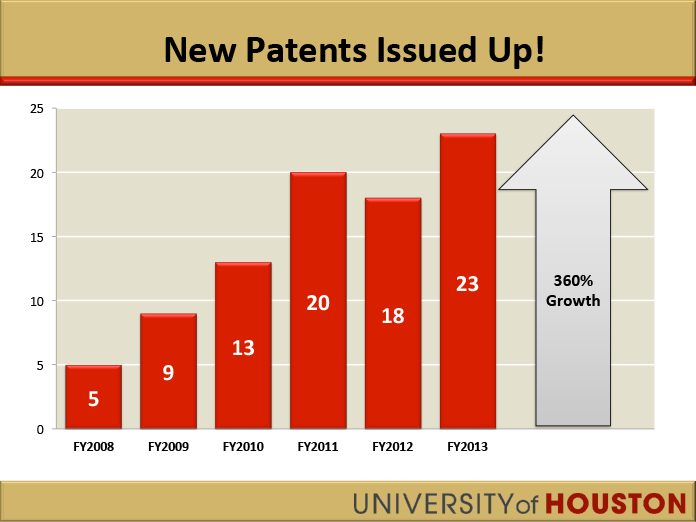
One may argue that royalty income is an indicator of how well we have done in the past. What signals progress for the future are the new technologies that we are disclosing and licensing today. I am proud to report that this activity is also up significantly, from 5 in 2008, to 23 in 2013.
All of this is great news. However, nothing reflects our commitment to excellence better than the news that we…the University of Houston…is one of 5 finalists to host a new Phi Beta Kappa chapter! We seem to be in the strongest position than we have ever been.
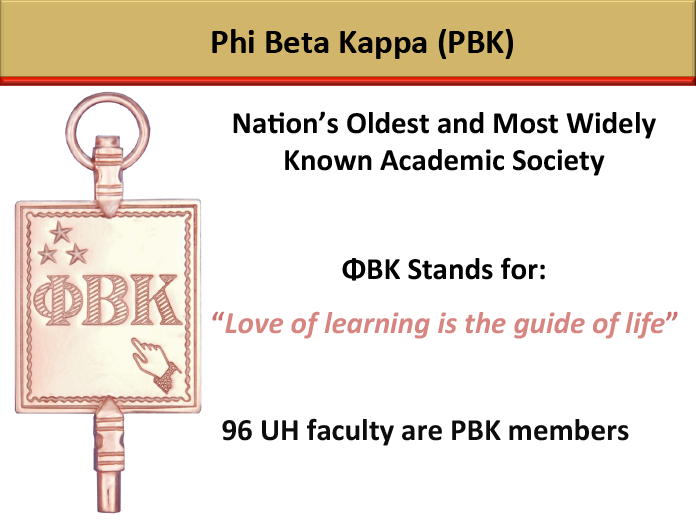
Since chapters are granted to the faculty, I thank our Phi Beta Kappa faculty for their dedicated work. May I ask you to please stand?
Now please allow me to discuss the Energy Research Park, one of the biggest gambles we took 4 years ago.
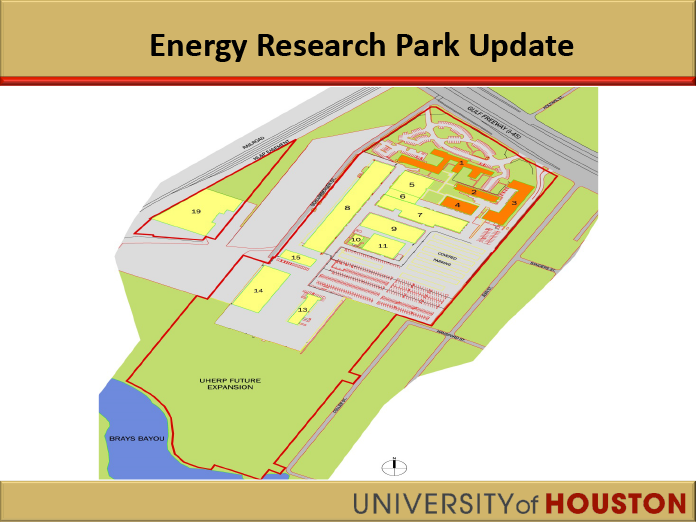
The initiative began with approval by the Board of Regent’s to purchase 75 acres of land with 500,000 sq. ft. of built-up area next to the campus.
The objective of the Energy Research Park was three-fold: to educate and train students for the energy industry, to solve energy problems, and to incubate new ideas. Today, the ERP is home to 2 academic programs, multiple research centers, 2 tenant partners, and 5 start-up companies in various stages of development.
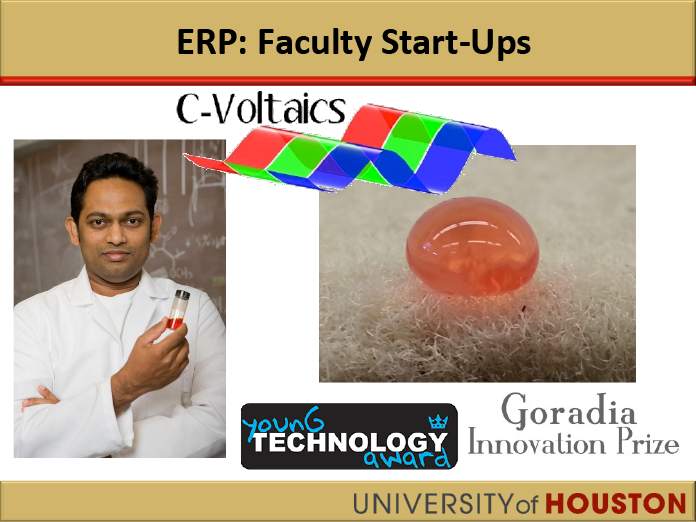
C-Voltaics is one of those start-up companies, and it is already producing an amazing nano-coating material—out of the test tube, onto our jeans and patio decks!
Stronger than anything in the market for protecting fabric, wood, and metal, it is a technology that the whole innovation world is talking about. Launched by one of our own faculty, Physics Professor Dr. Shay Curran, C-Voltaic is the first nanotechnology manufacturing company spun out of the Energy Research Park. As kudos to all innovators, I would like to ask Dr. Curran to please stand and be recognized?
Can students start a company as well? Let’s watch this 30-second video.
Justin Farley defined a limit, conquered it, and then he and his teammates made it limitless by forming Unlimiters! Today, the company is growing in the Energy Research Park.
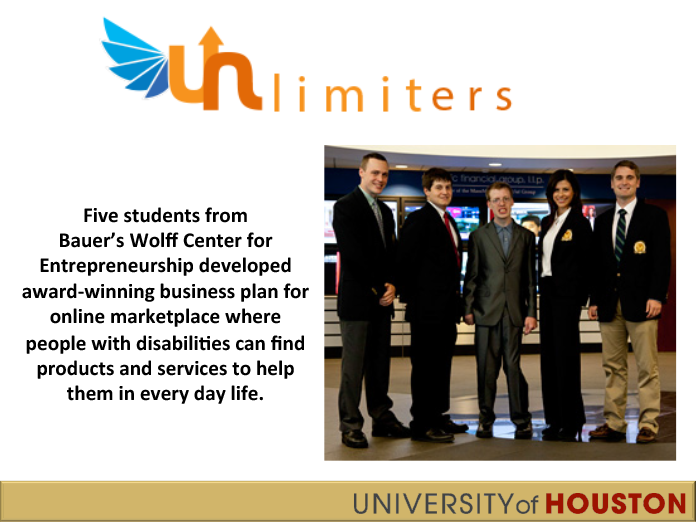
This team from the Wolff Center for Entrepreneurship in the Bauer College of Business won 1st prize in the national innovation competition. Will the members of the Unlimiters team who are here please stand…
Talk about national visibility.
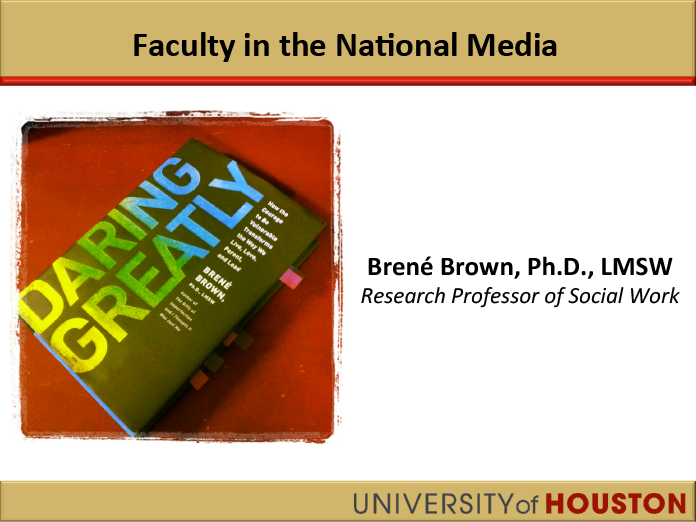
Brené Brown with her philosophy on vulnerability and shame, appeared in every print and television media imaginable.
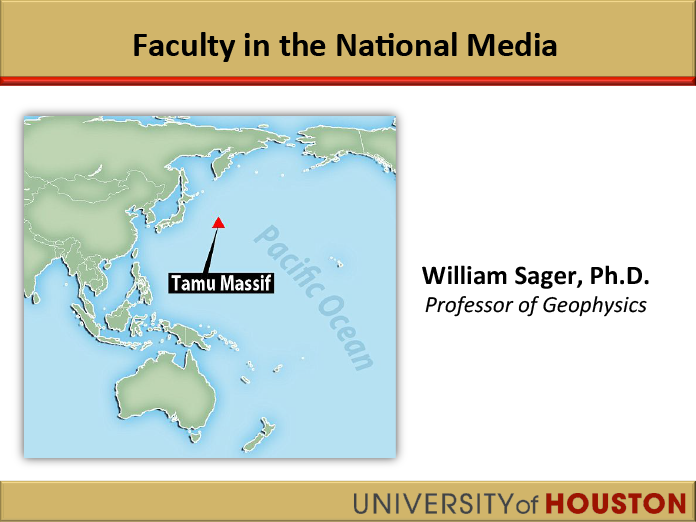
William Sager had incredible 451 media appearances for discovering the world’s largest volcano under the Pacific Ocean.
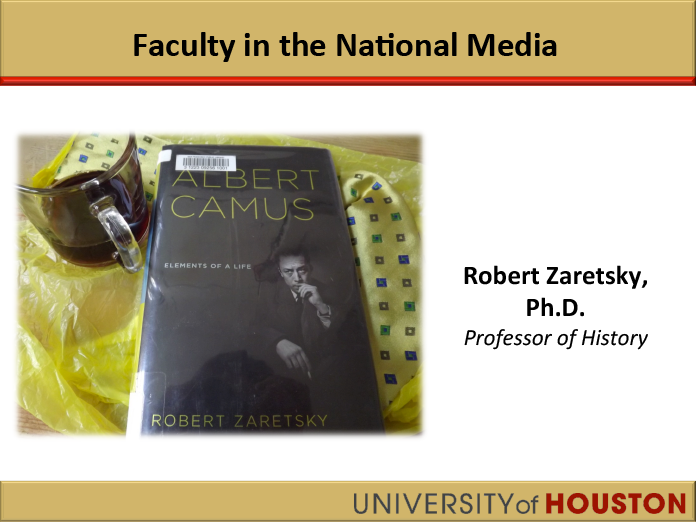
And Robert Zaretsky from the Department of History and The Honors College became a familiar name to the readers of the nation’s top 5 newspapers thanks to his opinions and book reviews.
May I request Brené, William, and Robert to please rise?
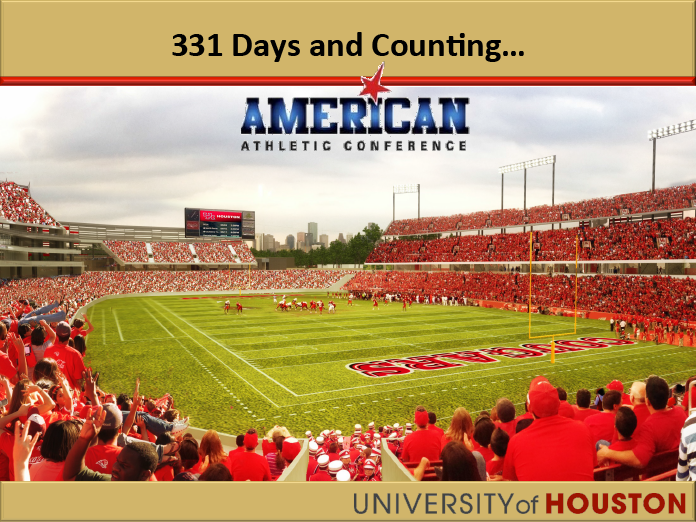
331 days left and counting down. I don’t know about you, but I cannot wait for this home of the Undefeated Cougars to open. This facility will not only be a boost to our student-athletes, but will also enrich the college experience of our students, most especially those living on campus. Next on the horizon is the basketball practice facility and arena, which is in the design phase and will soon break ground.
On the topic of basketball, what a year it was!
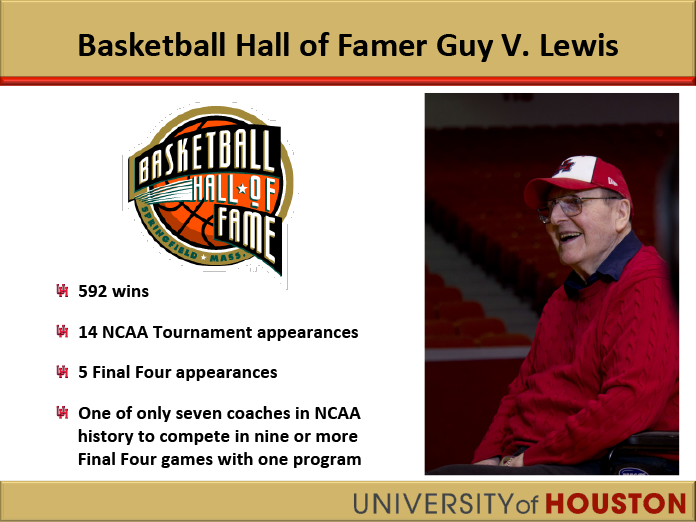
The legend who created Phi Slama Jama, who put UH on the national map, and who captured the imagination of millions of television viewers with the “Game of the Century” against UCLA, was finally inducted into the Hall of Fame and many alumni were there to witness this great moment for the University of Houston.
Speaking of alumni, we are entering a new era in alumni relations. With a mutual desire to engage and support our alumni, the Alumni Association and the University have formed a relationship. Advised by its own board, the Association is now a part of the university administration.
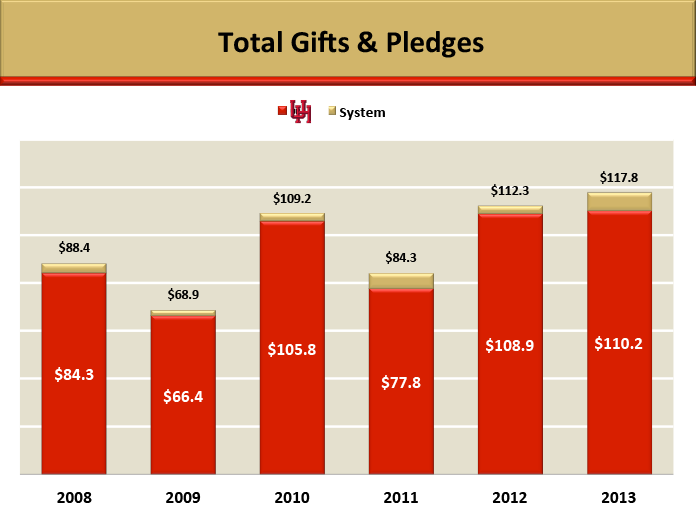
Our alumni are critical to our future. Thanks to them, our donors and corporate partners, the University of Houston had a record-breaking year in fund-raising by raising $118 million for the system and $110 for UH.
Our academic leaders and advancement team did a phenomenal job, and to highlight their spirit, I would like to tell you about one very special person. About a year ago, this person traded his burnt orange heart for a Cougar red one. Within a few months of starting here, he was diagnosed with cancer that required radiation, surgery and chemotherapy. But instead of being discouraged, he doubled his red wardrobe and—from his hospital bed—led his team to beat the fund-raising goal for the year. Will you please help me recognize the heroic heart of Cliff Redd? Cliff, please stand.
Now, I would like to move on to a topic that I typically do not address, but that I find important to do so today…campus safety.
I am often asked, “Is our campus safe?”
“Of course, it is as safe and as vulnerable as any other place in Houston,’ is how I typically respond. Over 120 police and security officers and 600 cameras help keep the campus safe. By the way, this is twice the personnel and technology we had just three years ago!
But the question again is, “so what?” Has it made a difference? We took a look at all universities and colleges in Houston, since all of us are required by federal law to file any and all incidences of crime.
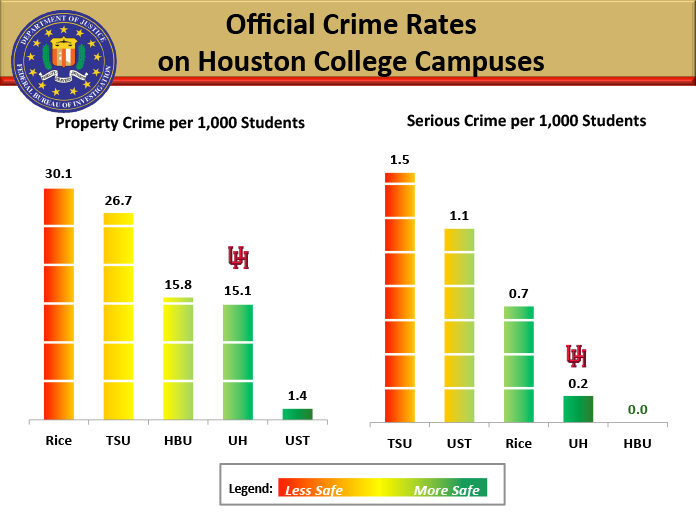
FBI data on file shows that our university is safer than others in the city, and the fact is that it is also safer than the city itself.
Of course, as far as we are concerned, even one crime is one too many, but with over 8,000 students living on campus and 40,000 others working or studying, we are a small city where all elements coexist—the good as well as the bad. We are a safe campus, but we must, and will, do more to make it even safer. Our goal remains to make our campus a zero crime zone.
Now that we have answered the question of “so what?” let’s reflect on what’s next.
Undoubtedly, the University of Houston is a great value, a great bargain.
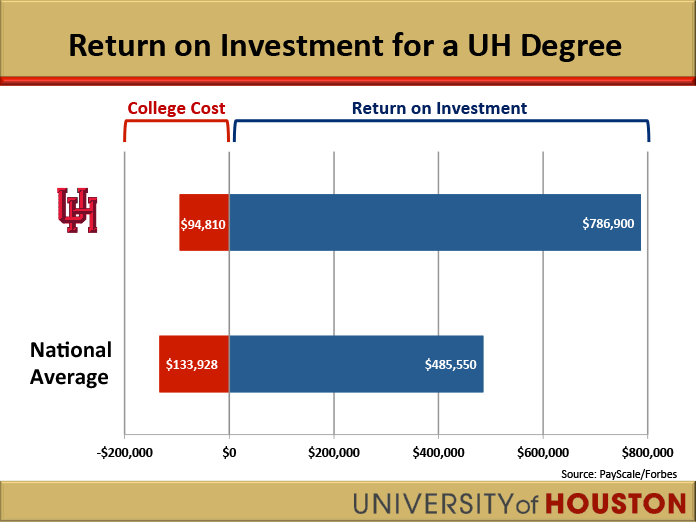
We are a great investment, and we offer a better return on that investment than the national average.
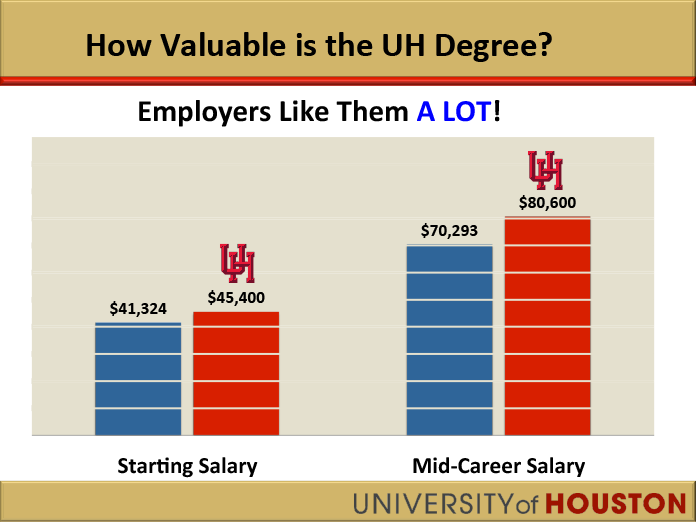
Our graduates start their careers with higher salaries, and they earn more than their national peers throughout their lifetimes.
But our challenge is not about who graduates, but about the one who is left behind, who drops out, and who quits.
Our Tier One chant sounds hollow if we fail to embrace each and every one of our students, and get them across the finish line to graduation. That is our mission. That is why we exist.
Therefore, our No. 1, and a no-excuse priority, will continue to be student success. In the coming year we will focus on improving graduation rates across the board: 4-year, 6-year, and transfers. The latest retention trends give us hope; nonetheless, we will have to stay committed. Our graduation rates are still below state and national averages, and we cannot hide behind excuses until we reach and surpass those averages.
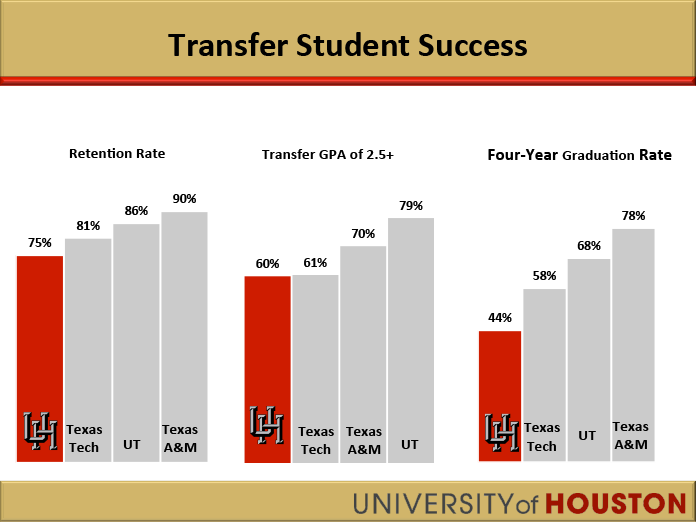
I would like us to give particular attention to the success of our transfer students. If we compare ourselves to some other universities, it is clear that we are not recruiting them well, we are not retaining them well, and we are certainly not graduating them well. These transfer students are accumulating far more credits than necessary, and taking much too long to graduate. This year, we are making a special commitment to tackle this challenge, and pledging to overcome it.
Provost Short and her team are launching two new programs to complement other ongoing efforts:
- UH in 4: To empower and support students to finish their degree in 4 years if they are so inclined. Under this program, students will obtain their degree in 33% less time, with 20% less effort, and at 20% less cost than the typical graduate today. But, true saving are even greater because by graduating in 4 years, students are able to enter the workforce 2 years sooner, which according to the national data is worth $90,800.
- Grab the Grad: We see an unusual drop-out rate in the final year. But no more. Under this program, we will focus on seniors and get them across the line.
I know it is a huge undertaking, and that it will require every single one of us to work and change the paradigm, but all I know is that anything is possible if we want it bad enough. And we do want our students to succeed bad enough!
Our second priority is to keep marching toward national and global competitiveness, improve our rankings and solidify our tier one position. This year, we maintained our national rankings and grew the number of programs ranked nationally. Ten of our graduate programs are now ranked in the Top 50. For the first time, our Law Center as a whole is ranked in the Top 50, and 4 of the law programs are ranked in the Top 20!
Going forward, we will continue to build our big rocks in energy, health, and the arts and will continue to give boost to our nationally recognized star programs. Much remains to be done in all of these areas. If we want to be relevant to our city, we must build a research enterprise that advances the quality of life and in doing so helps our communities, enriches our souls, and makes us better human beings.
We know that American higher education, still the best in the world, is facing a gathering storm.
If anything can hold us together, it is our core mission. We exist because we educate and because we open young minds to the possibilities of their own potential. Everything else—residence halls, recreation centers, research labs, sports—only enhance our capacity to do so. They are not the mission in themselves.
Students come to us to open their minds. And we want to do so. But somehow the dots do not connect and students do not succeed. Whose fault is it? Or does it matter?
Imagine a restaurant that offered us a great table right by the window, live music, and free drinks but did not serve food. Imagine a plane that offered us extra leg room, free checked-in bags, and hot meals but did not fly. How long do you think they will be in business? Regardless of what arguments a restaurant makes (“well, customers don’t really know what they want to eat”)…or an airline makes (“well, passengers cannot decide where they want to go”)… in the end, they will disappear because their commitment to their core mission disappeared.
It is important for us as administrators, faculty, and staff to rededicate ourselves to the core mission of our university, no matter how hard it is and no matter how uncomfortable it makes us.
If anyone can shape the future of higher education, we in Houston…we in Texas…can. Our economy is robust, our community is generous, and our willpower is that of a Cougar.
In coming years, may we find the wisdom to do the right thing, and the humility to know that it is not us alone, but us as a team, that makes right things happen.
May god bless our university, and may god bless you. Go Coogs!
Thank you to the opening and closing acts.
From the School of Theatre and Dance—Opening
This project is supported through the Innovation Grant program of the Cynthia Woods
Mitchell Center for the Arts, which is funded in part by the Houston Endowment, Inc.
Additional Credits:
Choreography by Associate Professor Teresa Chapman
Costume design by UH SOTD Graduate Design student James McDaniel
Dancers: Mallory Horn (UH student), Catalina Alexandra (UH Graduate), Kristen Frankiewicz,
and Roberta Cortes.
From the Moores School of Music—Closing
The UH Moores Concert Chorale
Director: Betsy Weber
Performance: an arrangement of the George and Ira Gershwin "I Got Music."